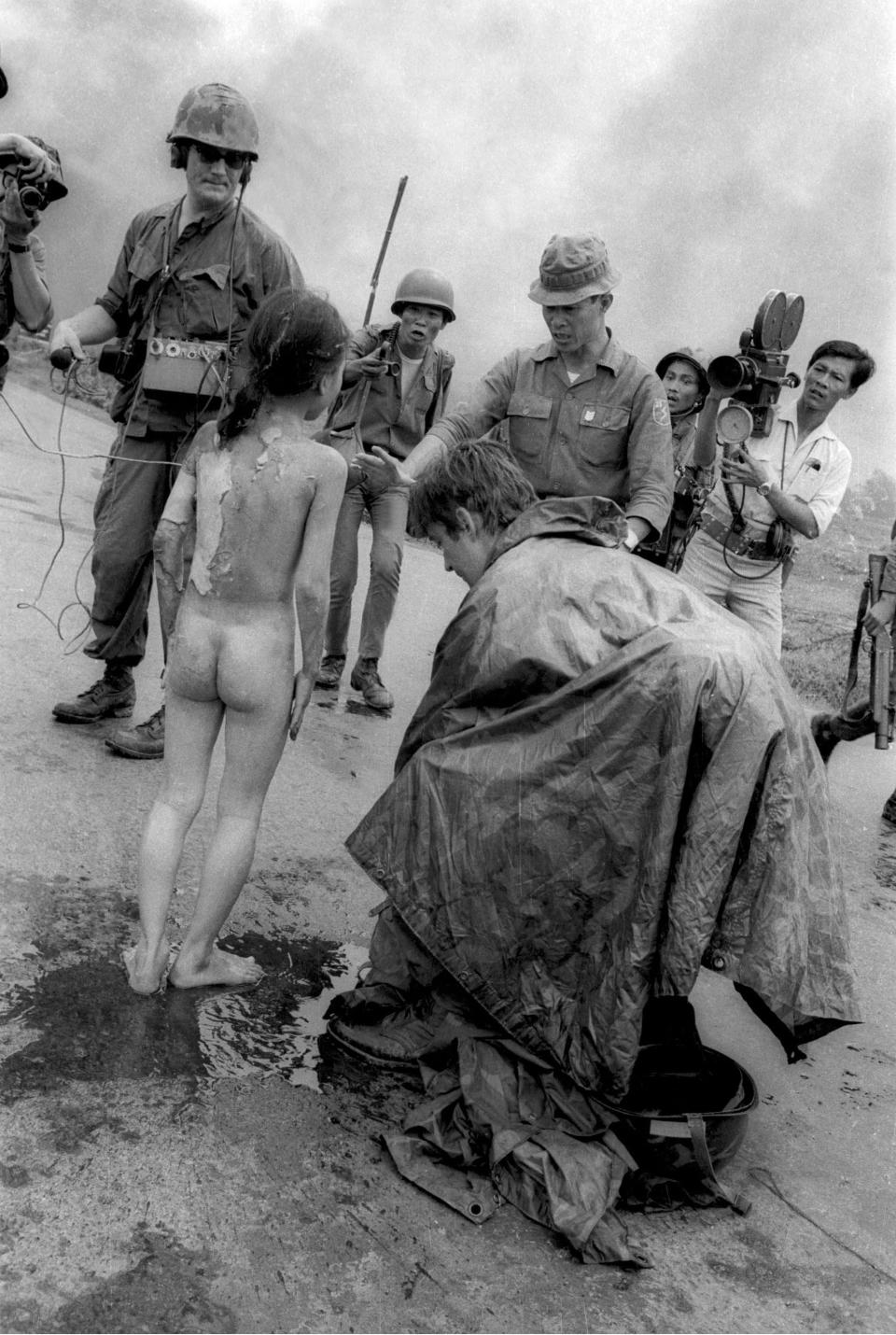I always wondered what happened to that little girl...
Lasers may ease pain for 'napalm girl' in AP photograph
24 Oct.`15 — In the photograph that made Kim Phuc a living symbol of the Vietnam War, her burns aren't visible — only her agony as she runs wailing toward the camera, her arms flung away from her body, naked because she has ripped off her burning clothes. More than 40 years later she can hide the scars beneath long sleeves, but a single tear down her otherwise radiant face betrays the pain she has endured since that errant napalm strike in 1972.
Lasers may ease pain for 'napalm girl' in AP photograph
24 Oct.`15 — In the photograph that made Kim Phuc a living symbol of the Vietnam War, her burns aren't visible — only her agony as she runs wailing toward the camera, her arms flung away from her body, naked because she has ripped off her burning clothes. More than 40 years later she can hide the scars beneath long sleeves, but a single tear down her otherwise radiant face betrays the pain she has endured since that errant napalm strike in 1972.
Now she has a new chance to heal — a prospect she once thought possible only in a life after death. "So many years I thought that I have no more scars, no more pain when I'm in heaven. But now — heaven on earth for me!" Phuc says upon her arrival in Miami to see a dermatologist who specializes in laser treatments for burn patients. Late last month, Phuc, 52, began a series of laser treatments that her doctor, Jill Waibel of the Miami Dermatology and Laser Institute, says will smooth and soften the pale, thick scar tissue that ripples from her left hand up her arm, up her neck to her hairline and down almost all of her back.

In this June 8, 1972, file photo, 9-year-old Kim Phuc, center, runs with her brothers and cousins, followed by South Vietnamese forces, down Route 1 near Trang Bang after a South Vietnamese plane accidentally dropped its flaming napalm on its own troops and civilians. The terrified girl had ripped off her burning clothes while fleeing. In late September 2015, Phuc, 52, began a series of laser treatments at the Miami Dermatology and Laser Institute to smooth and soften the pale, thick scar tissue that she has endured for more than 40 years.
Even more important to Phuc, Waibel says the treatments also will relieve the deep aches and pains that plague her to this day. With Phuc are her husband, Bui Huy Toan, and another man who has been part of her life since she was 9 years old: Los Angeles-based Associated Press photojournalist Nick Ut. "He's the beginning and the end," Phuc says of the man she calls "Uncle Ut." ''He took my picture and now he'll be here with me with this new journey, new chapter." It was Ut, now 65, who captured Phuc's agony on June 8, 1972, after the South Vietnamese military accidentally dropped napalm on civilians in Phuc's village, Trang Bang, outside Saigon.

In this June 8, 1972, photo, television crews including ITN reporter Christopher Wain and South Vietnamese troops surround 9-year-old Kim Phuc on Route 1 near Trang Bang after a South Vietnamese plane targeting suspected Viet Cong positions accidentally dropped its flaming napalm on the civilian village. The terrified girl had ripped off her burning clothes while fleeing, but still suffered serious burns over a third of her body. AP photographer Nick Ut remembers her screaming in Vietnamese, "Too hot! Too hot!" To take her to a hospital, he put her in the AP van where she crouched on the floor, her burnt skin raw and peeling off her body as she sobbed, "I think I'm dying, too hot, too hot, I'm dying."
Ut remembers the girl screaming in Vietnamese, "Too hot! Too hot!" He put her in the AP van where she crouched on the floor, her burnt skin raw and peeling off her body as she sobbed, "I think I'm dying, too hot, too hot, I'm dying." He took her to a hospital. Only then did he return to the Saigon bureau to file his photographs, including the one of Phuc on fire that would win the Pulitzer Prize. Phuc suffered serious burns over a third of her body; at that time, most people who sustained such injuries over 10 percent of their bodies died, Waibel says. Napalm sticks like a jelly, so there was no way for victims like Phuc to outrun the heat, as they could in a regular fire. "The fire was stuck on her for a very long time," Waibel says, and destroyed her skin down through the layer of collagen, leaving her with scars almost four times as thick as normal skin.
MORE

